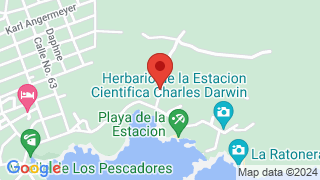Galapagos National Park



The Galapagos National Park is located in the Galapagos Islands, located in the Western Pacific, 1 000 km west of the coast of Ecuador. The 97% of the terrestrial surface of the archipelago of Galapagos is part of the National Park, it composes it, 7 major islands: Isabela, Santa Cruz, Fernandina, Santiago, San Cristóbal, Floreana and Marchena; 14 minor islands: Española, Pinta, Baltra, Santa Fe, Pinzón, Genovesa, Rábida, North Seymour, Wolf, Tortuga, Bartolomé, Darwin, Greater Daphne and South Plaza; 12 additional islands; 64 islets and 136 rocks, all of volcanic origin.
Galapagos National Park Climate
The May-December temperature ranges from 19-26 °C; and January-May from 31-33 °C.
Galapagos National Park Location
In the insular region of the Galapagos Islands.
Galapagos National Park How to get there?
- At the airport: Transit control card (TCT) and inspection by the Agency for the Regulation and Control of Biosecurity for Galapagos.
- When you arrive in Baltra or San Cristóbal. Entrance tax to the protected areas of Galapagos.
- Getting to Puerto Ayora from Baltra.
- Reach Puerto Baquerizo (San Cristóbal)
Due to the global biological and ecological importance of the archipelago, the first protection laws were enacted with the declaration of the Archipelago as a National Park in 1959 and later, as sites of global natural importance.
The islands are home to 6 species of giant tortoises, marine and terrestrial iguanas, seven species of lava lizards, sea lions, 85 different species of birds, among which we can mention: penguins, finches (13 species), albatrosses, pelicans, blue-footed and red-footed boobies, masked, frigates, flamingos, falcons, flightless cormorants, among others. And an exuberant seabed full of corals, make the Galapagos Islands an unforgettable destination.
Galapagos National Park Tourist Attractions
Among its main attractions are
Santa Cruz Island
- Charles Darwin Research Station: Inside the Station it is possible to visit the Interpretation Center, the Turtle and Terrestrial Iguana Breeding Center, the Library and Souvenir Store.
- Tortuga Bay Is considered the most beautiful white sand beach in Galapagos
- Los Gemelos: They are located in the high part of the island, in the highway Puerto Ayora-Canal de Itabaca.
- El Garrapatero: It is a beach of white sands in whose proximities there is a coastal lagoon where flamingos and patillos can be observed.
- Bellavista Tunnel: Longest volcanic tunnel in South America. It is inhabited by endemic arthropods with very special characteristics of underground evolution.
- The Cracks: They're located west of Academy Bay. From Puerto Estrada pier in Finch
Isabela Island
- Muro de las Lágrimas (Wall of Tears): Beach of white sand and lagoons that are surrounded by mangroves. It is very close to Puerto Villamil, if you make a journey is 6 km, passing through the Playa del Amor
- Sierra Negra Volcano: An active volcano, considered the oldest on Isabela Island.
- Tintoreras: To reach this islet it is necessary to take a panga. It is easily accessible and is located south of Puerto Villamil. There is a small bay of calm waters, where you can observe the fauna of the zone like iguanas, wolves and marine turtles. The bay is communicated with a crack. Here you can observe the marine fauna such as the harmless sharks, known locally as blue sharks.
Santiago Island
- Santiago Island, has a characteristic peak and a path of stairs to access. You can observe the blue sharks; while the northern one is one of the best places to dive and observe the endemic penguins of Galapagos.
The Galpagos National Park occupies most of the 234 emerged land units that make up the archipelago and are scattered in what constitutes the Galapagos Marine Reserve. In 1969, the existence of the Galapagos National Park Service was officially legalized. Its organic structure was established in 1973, when its functions and attributions for the management and administration of the protected area were detailed.

Publicado en:
Publicado por:




